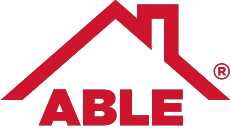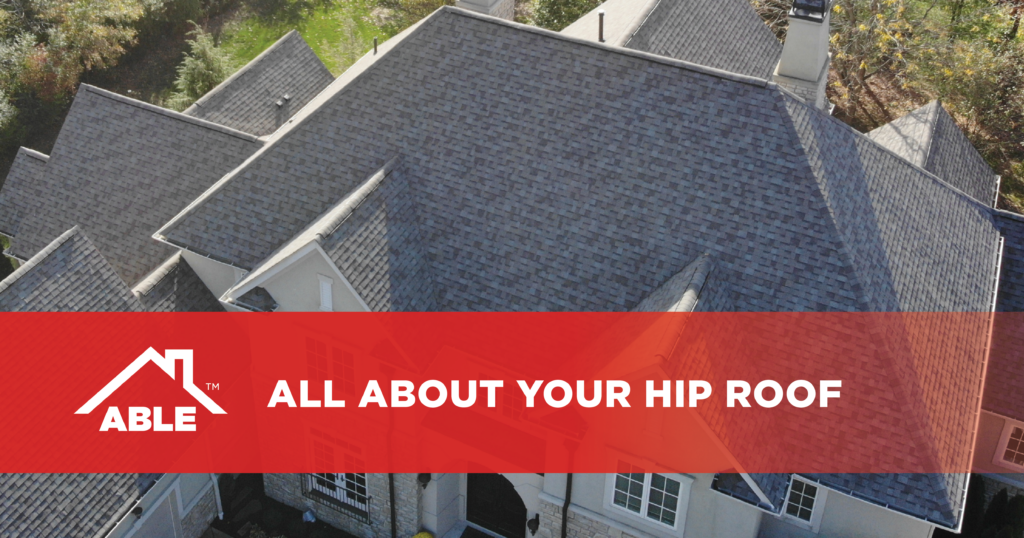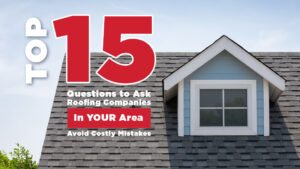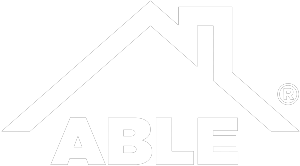There are many ways that you can work to keep your family safe in your home. You lock your doors at night, install lights and cameras, research neighborhoods and schools before you move. All of these things are fantastic ways to protect your family from harm, but there is a large aspect of home protection that is often overlooked—roofs. Your roof is one of the biggest protectors of your home, sheltering you from rain, wind, debris, uncomfortable temperatures, and outdoor critters. Without a roof, there is no home.
Despite the importance of roofs, many people don’t know very much about them. And because they’re so commonplace, roofs are often overlooked or forgotten until something goes wrong. However, it’s important to know about your roof style, its advantages and disadvantages, and what style to look for when buying a new home. Hip roofs are a main category of roofing styles, and it’s advantageous to know a little bit more about them.
What is a hip roof?
Hip roofs are distinct from other roofs in a few ways. Primarily, they are categorized by the fact that they involve four slopes, one along each side of the home. These four slopes meet at the top of the home, creating an angle that runs lengthwise along the center of the roof. This angle is called a hip, thus giving the hip roof its name. This style was popularized in 1700s American homes and regained popularity in the 1950s. Hip roofs are distinct for their four slopes, and most variations of the style lack vertical sloping or gables at the ends. These roofs are generally rectangular and are found in homes that fit that shape. One popular application of hip roofs occurs in ranch-style homes.
Types of hip roofs
Under the umbrella of hip roofs, there are several variations or types that have gained popularity throughout the years. Here are just a few variations that you may find:
- Dutch gable hip. This style has a main hip but also contains several smaller hips from dormers, or windows, installed on the roof.
- Pyramid hip roof. This roof is similar to a standard hip roof. However, each side is equal in length. This creates more of a typical pyramid shape rather than a rectangular pyramid that is more commonplace for the hip roof style.
- Jerkinhead or half hip. This style has two sides that are longer than the other two. The two longer sides may have additional slopes or gables at the end, depending on the style. The short sides create home eaves, which are great for windows or additional half levels in the home.
These may sound similar, but they are certainly distinct. Each of these styles is different and may or may not fit with your desired home style. It is also important to consider your home’s structure, local weather patterns, and prices of your desired roof styles before making any decisions.
Advantages of hip style roofs
As with any style roof, hip roofs have distinct advantages that make them a great choice for many families. Here are some of the main advantages to this style:
- Good drainage. The continuous slope of hip roofs makes it difficult for debris to get stuck and easy for water to flow freely into the gutters.
- Excellent for extreme weather. Hip roofs are stable, giving them incredible wind resistance — even hurricane-level gusts. Because of their excellent drainage, they make fantastic roofs for wet and snowy climates as well.
- Exceptional insulation. Hip roofs help to keep the heat and cold where they belong in your home, including during warm summer months.
- Curb appeal and resale value. Because hip roofs are reliable, easy to maintain, and stable, they prove advantageous for homeowners looking to sell their homes.
These are just a few advantages of the hip roof style. Their longevity in the world of roofing styles speaks to their dependability and popularity.
Disadvantages of hip style roofs
Though there are significant advantages, there are a few downsides to hip roofs as well. It’s important to consider all of the facts before deciding on your roof style of choice. Here are a few disadvantages of hip roofs:
- They are prone to leaking. Because of the distinct seams on Hip roofs, there are several places for water to enter the attic and cause damage. To mitigate this risk, hire an expert roofer.
- They are expensive. As far as roofs go, hip roofs sit under the price of mansard but over the price of gable. This is because it takes expert installation, additional time, and specialty equipment to install.
Though there aren’t many disadvantages to hip roofs, it is essential that you consider them when making any decisions about your home.
How hip roofs compare
It is not only important to understand the ups and downs of hip roofs themselves, but you must also be able to compare them with your other roofing options to truly make the best decision for your family. Mansard roofs are popular, the style is aesthetically pleasing, and it involves two distinct slopes on each side of the roof. The top slope is usually more gradual, leading to a steep slope that comes down the sides of the house. These roofs are beautiful but often difficult to maintain and don’t stand up as well in extreme weather. Gable roofs are similar to hip roofs. However, they only have two sloping sides instead of four. They are excellent for drainage and extreme weather, and have a distinct style that is appealing to some.
Call Able Roofing
It’s important to remember to never attempt roofing projects without a professional. Roofs are more complicated than they seem, and injuries can easily occur if you try to examine or repair your roof yourself. When you need your roof redone, inspected, replaced, or built from scratch, no one can help you more thoroughly than the experts at Able Roofing. We have the expertise and experience to help you select the perfect roof style for your family’s needs. We can work with any style of roof, and we pride ourselves on our knowledge of the ins and outs of each kind. We are diligent in our work, so you can have peace of mind for years to come. Contact us today to get started.








